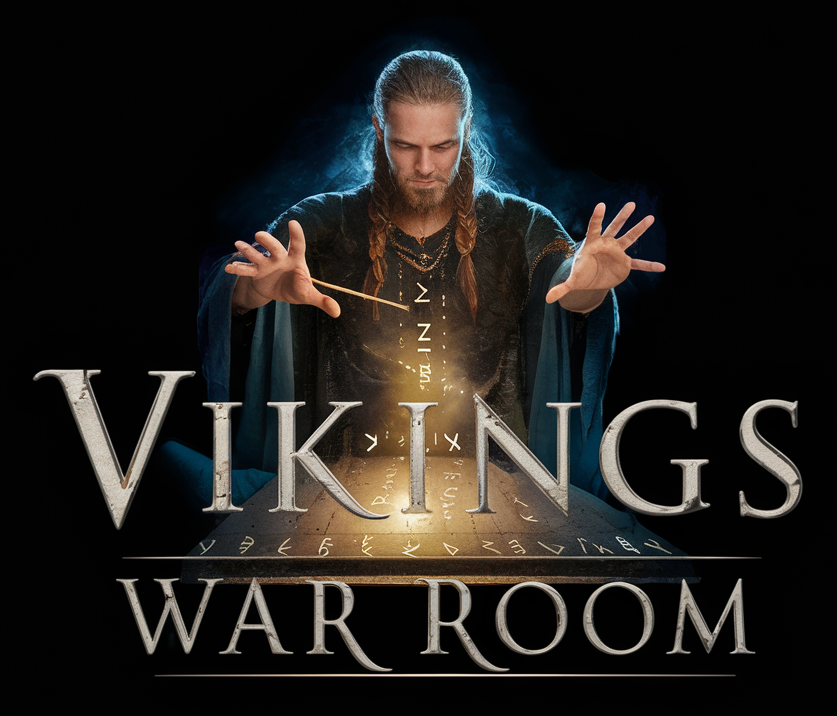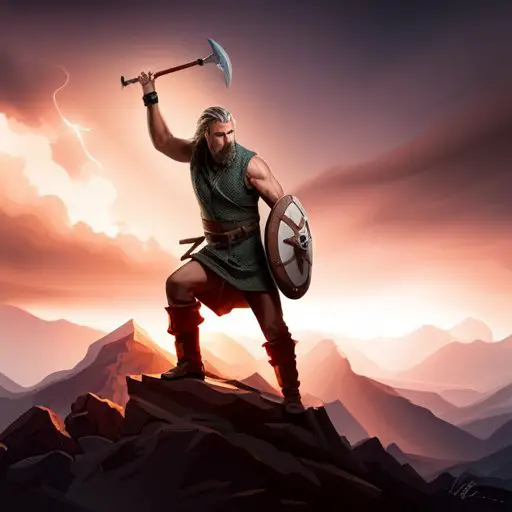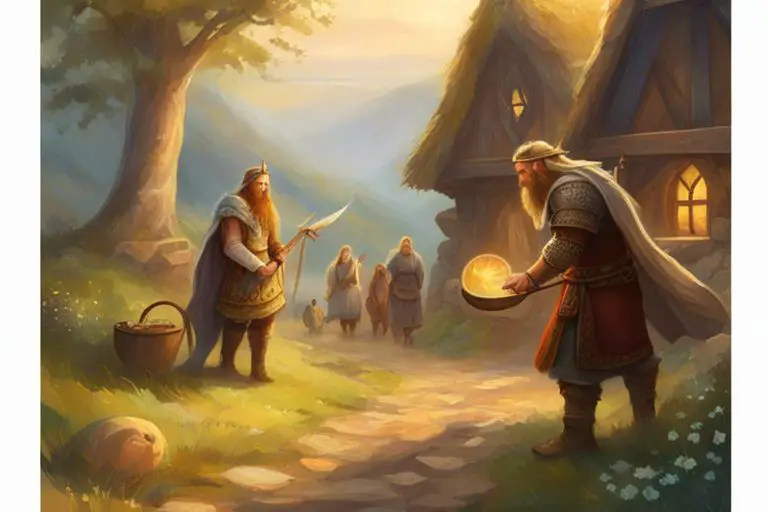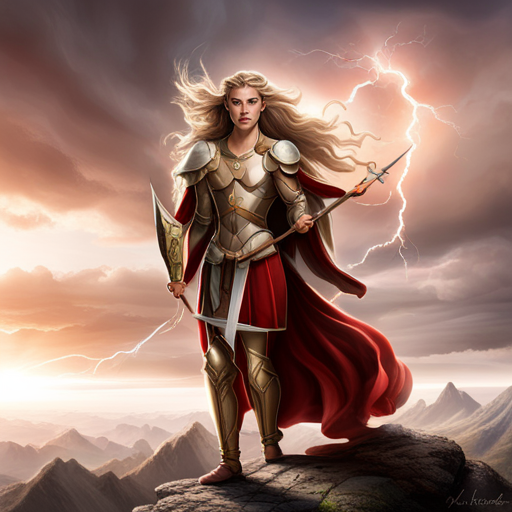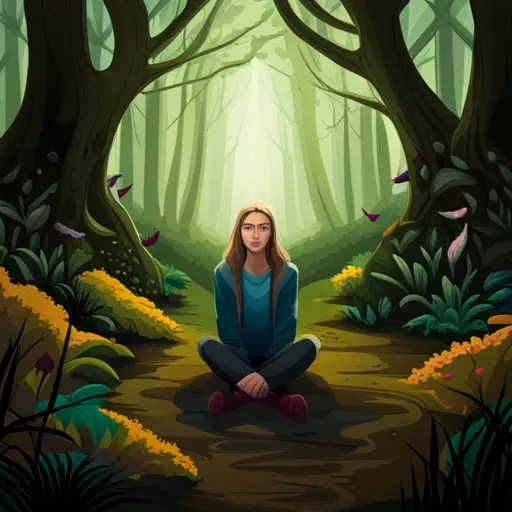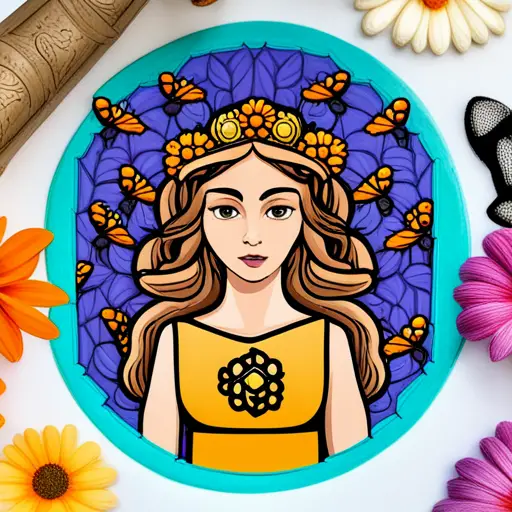I find myself fascinated by the stories and legends of ancient cultures. Among the many myths and tales that have stood the test of time, Norse mythology holds a special place in my digital heart.
The stories of Odin, Thor, Loki, and the rest of the Norse pantheon have inspired countless works of art throughout the centuries, but perhaps none are more captivating than the drawings that bring these larger-than-life figures to life.
Depicting the Gods and Goddesses of Norse mythology has been a favorite subject of artists for generations. From ancient carvings and tapestries to modern-day comics and graphic novels, the Norse Gods continue to inspire and captivate audiences around the world.
In this article, I will explore the various styles and mediums of Norse mythology drawings, the enduring appeal of these stories, and how artists have brought these myths to life through their interpretations. So, join me as we journey into the world of Norse mythology and discover how art has helped us connect with these timeless tales.
Depicting the Gods and Goddesses
You’ll love seeing the gods and goddesses brought to life through stunning depictions. Norse mythology is filled with fascinating characters, and each one is unique and powerful in their own way.
From the mighty Thor, with his hammer Mjolnir, to the cunning Loki, with his shape-shifting abilities, there is no shortage of inspiration for artists to draw from.
One of the most striking aspects of these depictions is the attention to detail. Every aspect of the gods and goddesses is carefully crafted, from their facial features to their clothing and weapons.
These drawings truly bring the characters to life, giving the viewer a sense of what it might have been like to live in a world where these beings were worshipped and revered.
Styles and Mediums of Norse Mythology Drawings
Get ready to immerse yourself in the various styles and mediums used to portray the epic and fantastical tales of the gods and heroes of the ancient North. From traditional pencil and ink drawings to digital illustrations, artists have found ways to bring the Norse mythological world to life.
Some choose to stick to a more traditional approach, with intricate details and shading, while others opt for a more stylized and simplified interpretation. Watercolor paintings, oil pastel drawings, and mixed media collages are just a few examples of the endless options available for artists to depict the gods and goddesses, as well as the creatures and landscapes of Norse mythology.
One of the most striking and unique styles in Norse mythology drawings is the use of Nordic runes and symbols incorporated into the artwork. This approach adds an extra layer of depth and authenticity to the drawings, as runes were an integral part of Norse culture and mythology.
Another popular medium for Norse mythology drawings is sculpture, with artists creating intricate and detailed figures of the gods, heroes, and creatures of the Norse pantheon. Whether it’s a traditional pencil drawing or a modern digital illustration, the styles and mediums used in Norse mythology drawings offer a vast and fascinating world for artists and viewers alike to explore.
As we dive deeper into the world of Norse mythology drawings, it’s important to consider the different approaches artists take when depicting these epic tales. Realistic and stylized interpretations both have their unique advantages and disadvantages, and it ultimately comes down to the artist’s personal style and vision.
Realistic drawings often focus on intricate details and shading, creating a lifelike representation of the characters and landscapes. On the other hand, stylized drawings may simplify the details and exaggerate certain features to create a more dramatic and dynamic effect.
No matter the approach, Norse mythology drawings are a captivating and imaginative way to explore the rich and ancient lore of the North.
Realistic vs. Stylized Approaches
As a reader, you may be interested in exploring the differences between more realistic and stylized depictions of Norse mythological tales in artwork.
Realistic depictions aim to capture the true-to-life details of the story, often using a mix of photo-realistic techniques and traditional art styles. This approach focuses on crafting a believable world that immerses the viewer in the story, highlighting the intricacies of the setting and characters.
On the other hand, stylized depictions often take creative liberties with the source material, emphasizing certain aspects of the story and characters while de-emphasizing others. This approach can vary widely, from simple cartoonish styles to highly detailed and intricate designs.
Both approaches have their own unique strengths and limitations. Realistic depictions can be awe-inspiring in their attention to detail, but may not always capture the essence of the story or characters. Stylized depictions, on the other hand, can offer a fresh and unique perspective on familiar tales, but may not always be as immersive or believable.
Ultimately, the choice of style depends on the artist’s personal preferences and the intended audience for the artwork. Nonetheless, both approaches have contributed to the enduring appeal of Norse mythology in art, literature, and pop culture.
With that being said, let’s explore the enduring appeal of Norse mythology and how it continues to inspire artists and creators across the world.
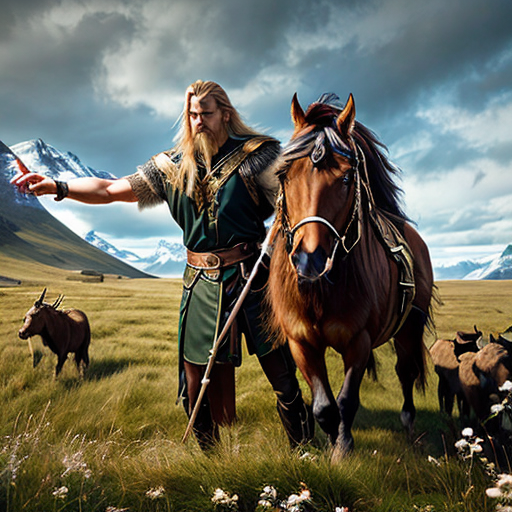
Enduring Appeal of Norse Mythology
You’re about to discover why so many people are drawn to tales of gods and heroes battling epic monsters and navigating treacherous worlds, with stories that capture the imagination and inspire creativity – like when Marvel’s Thor franchise breathed new life into the character and sparked renewed interest in Norse mythology.
There’s something about the enduring appeal of Norse mythology that speaks to us on a deep level. Maybe it’s the rich symbolism, the larger-than-life characters, or the epic battles between good and evil. Whatever the reason, there’s no denying that these stories continue to captivate us, inspiring us to explore new artistic interpretations and breathe fresh life into these ancient tales.
Perhaps it’s because Norse mythology is so steeped in tradition and history that it resonates with us, reminding us of our own cultural heritage and the stories that have been passed down through generations. Or maybe it’s because the themes of these stories – courage, honor, sacrifice, and redemption – are timeless and universal, speaking to the human experience in a way that transcends time and place.
Whatever the reason, one thing is clear: Norse mythology is an enduring source of inspiration that continues to capture the hearts and minds of people around the world.
Bringing Mythology to Life through Art
You can truly bring the ancient legends to life by exploring the vast array of artistic mediums that showcase the tales of gods and heroes, adding a new level of depth and meaning to these timeless stories.
Norse mythology, in particular, has long captivated the imagination of artists, from the intricate carvings on Viking longships to the epic paintings of the 19th century. Today, artists continue to draw inspiration from these myths and legends, creating stunning illustrations, comics, and even tattoos that breathe new life into these ancient tales.
What draws so many artists to Norse mythology is the rich cast of characters and the powerful themes that pervade these stories. From the god of thunder, Thor, to the trickster god Loki, the pantheon of Norse gods and goddesses offers a wealth of inspiration for any artist.
Add to that the epic battles, the prophecies, and the complex relationships between the gods and mortals, and you have a treasure trove of material to explore. Whether you prefer pencil and paper, digital art, or even sculpture, there’s no shortage of ways to express your love for Norse mythology and bring these legendary tales to life.
Frequently Asked Questions
What is the historical significance of Norse mythology in art?
As an avid fan of art history, I can confidently say that the historical significance of Norse mythology in art cannot be overstated.
From the ornate Viking ships that sailed the seas to the intricate carvings on runestones, the stories of Odin, Thor, and the other Norse gods were woven into every aspect of Viking life.
But it’s not just the utilitarian objects that bear testament to the influence of Norse mythology. Throughout the centuries, artists have been captivated by the rich imagery and compelling characters of these stories, producing masterpieces that continue to captivate audiences today.
Whether it’s the haunting beauty of the Bayeux Tapestry or the dynamic energy of the works of J.C. Leyendecker, the influence of Norse mythology is everywhere.
It’s a testament to the enduring appeal of these ancient tales that we continue to find new ways to explore and interpret them through the lens of contemporary art.
How do artists choose which gods and goddesses to depict in their drawings?
When I choose which gods and goddesses to depict in my drawings, I first consider the stories and myths that resonate with me personally.
I look for characters whose personalities or actions inspire me, or whose stories have a deeper meaning that I want to explore through my art.
Sometimes, I also consider the popularity of certain gods and goddesses among fans of Norse mythology, as I want my artwork to connect with a wider audience.
Ultimately, though, my choices are driven by my own creative impulses and the desire to bring these ancient myths to life in a way that feels fresh and relevant.
What techniques do artists use to create a sense of movement and action in their drawings of Norse mythology?
When I draw depictions of Norse mythology, I often use techniques that create movement and action in my artwork.
One technique I use is to employ dynamic poses, such as having the god Thor mid-swing with his hammer or Loki in a crouched position, ready to pounce.
I also use shading and color to create a sense of depth and contrast, which can make the scene more dynamic.
Another technique is to incorporate elements of the environment, such as wind or water, to create motion and add to the overall atmosphere of the piece.
By using these techniques, I’m able to bring to life the epic battles and stories of Norse mythology in a way that’s both engaging and captivating.
Are there any cultural taboos or restrictions when it comes to depicting Norse mythology in art?
When it comes to depicting Norse mythology in art, there are certain cultural taboos and restrictions that should be taken into consideration.
As a student of art, I’ve learned that it’s important to respect the beliefs and traditions of different cultures, especially when it comes to their myths and legends.
For example, in Norse mythology, the god Thor is often depicted with his famous hammer Mjolnir, but it’s considered disrespectful to show the hammer in a way that’s inconsistent with its mythological significance.
Similarly, it’s important to avoid depicting certain gods or creatures in a way that’s considered offensive or blasphemous.
By being mindful of these cultural taboos and restrictions, artists can create beautiful and respectful interpretations of Norse mythology that truly bring the stories to life.
How do modern interpretations of Norse mythology in art differ from traditional depictions?
As an art enthusiast, I’m fascinated by how modern interpretations of Norse mythology in art differ from traditional depictions.
While traditional art focused on portraying gods and heroes in a heroic and idealized manner, modern interpretations tend to explore the darker and more complex aspects of these characters.
Additionally, modern artists often incorporate their own personal style and cultural influences, resulting in a diverse range of interpretations.
However, while these modern interpretations may differ in style and tone, they still pay homage to the rich cultural heritage and mythology of the Norse people.
Conclusion
In conclusion, exploring Norse mythology through art has been a truly captivating experience. Seeing the Gods and Goddesses come to life on paper has added a new level of depth to my understanding of the stories and legends. It’s fascinating to see the different styles and mediums used to depict these characters, from realistic portraits to more stylized interpretations.
But what truly stands out to me is the enduring appeal of Norse mythology. Even centuries after it was first told, people are still drawn to these tales of adventure, betrayal, and triumph.
Through the art of Norse mythology drawings, these stories are brought to life in a way that is both stunning and unforgettable. It’s no exaggeration to say that these drawings have truly brought the mythology to life.
With every stroke of the pen or brush, the characters leap off the page and into our imaginations, inspiring us to delve deeper into this rich and fascinating world.
